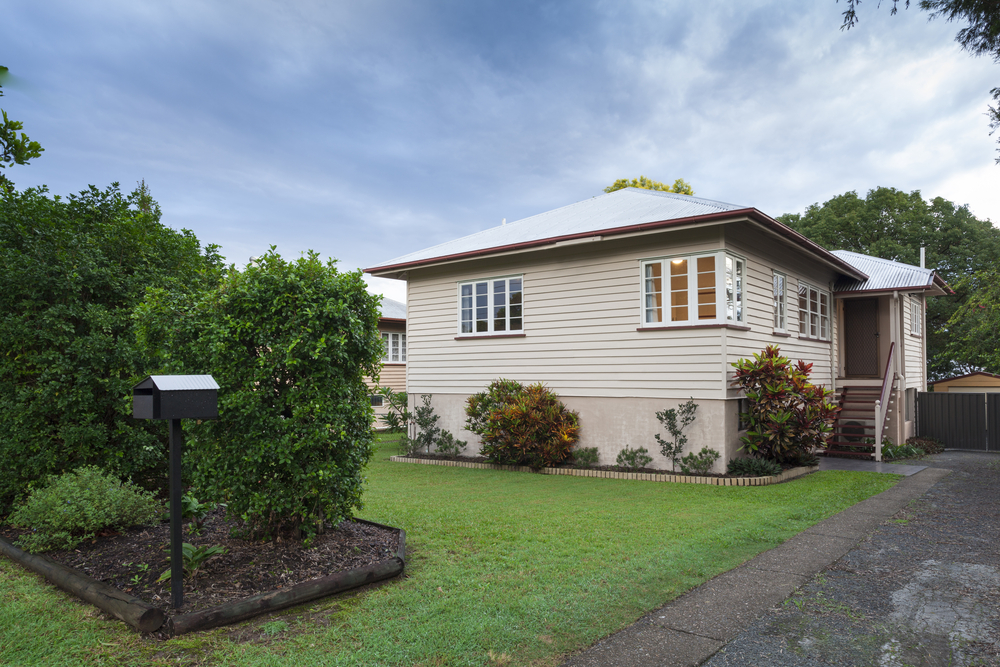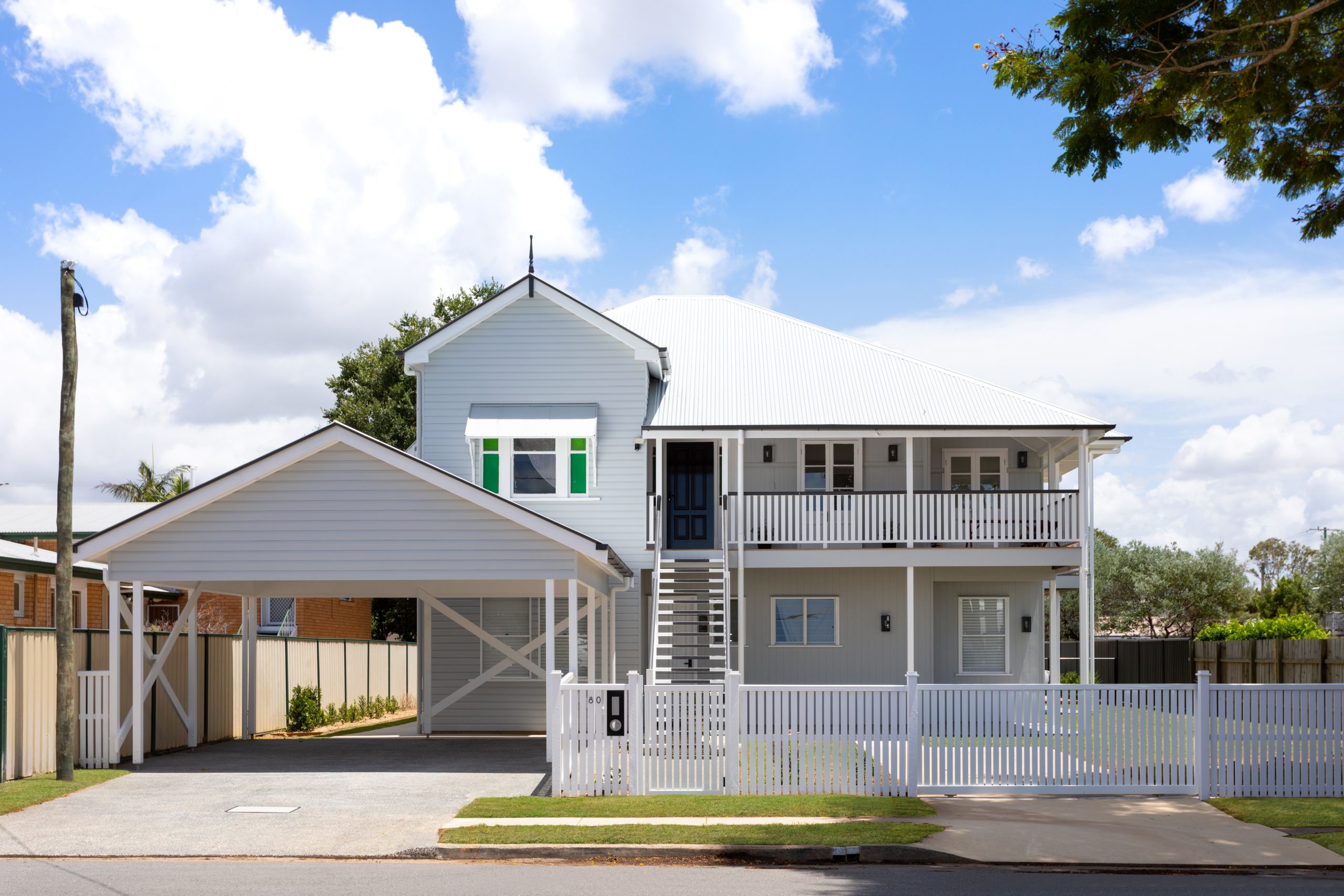Have you got a historical or post-war house in Brisbane that’s seen better days? Maybe your family is finding it too cramped and outdated to comfortably live in.
If so, it may be time to consider a post-war renovation. This can help modernise your home, making it more spacious and comfortable for your family and for entertaining guests.
In this article, we’re sharing our expertise in post-war home renovations, diving into the reasons to renovate, the challenges, and how to plan a successful project. Plus, we’re taking a quick look at one of our recent projects to inspire you.
What is a Post-War House?
The post-war house refers to the style of Queenslanders built in Brisbane in the 1940s after World War II. Compared to previous eras, these houses were simpler and often on the smaller side. Often they featured just two bedrooms and one bathroom.
Although they were usually built on larger blocks of land in advantageous locations, there was evidently a demand for function over form in this era.
That being said, the structure itself provides a fantastic foundation and these are often ideal for renovation or extensions, to provide more space and bring the home into the 21st century.
Why Renovate Your Post-War Home?
Renovating a post-war house can offer a range of benefits, from preserving historical charm to modernising the property for better comfort and functionality. Here are a few key reasons to consider:
1. Preserve Architectural Character
Post-war houses often feature unique architectural elements like hardwood floors, high ceilings, and distinctive mouldings. Renovation allows you to restore and preserve these classic features while updating the home for modern living.
2. Improve Energy Efficiency
Many post-war homes were built without energy-efficient materials or modern insulation. Renovating gives you the opportunity to replace windows, insulate walls, and upgrade heating and cooling systems, significantly reducing energy costs.
3. Increase Property Value
By updating the kitchen, bathrooms, and living spaces, or adding modern amenities, you can increase the resale value of your post-war home. Even small upgrades can offer a good return on investment.
4. Enhance Liveability
Older homes may not be suited to today’s lifestyles. Renovations can open up floor plans, add an extension, create more natural light, or add much-needed storage space, making the home more functional for your family.
5. Fix Structural Issues
Over time, post-war homes may suffer from wear and tear, such as foundation problems, outdated electrical systems, or plumbing issues. A renovation can address these problems, ensuring the home is safe and structurally sound.
6. Personalise Your Space
Renovating allows you to tailor the home to your personal tastes and lifestyle. Whether it’s updating the aesthetic, creating an open-concept living area, or adding modern fixtures, the home can be transformed into your dream space.
Also, unlike Queenslanders built in previous decades, many post-war houses do not have ‘character protections’ or aren’t listed on the Queensland Heritage Register, meaning there are fewer regulations to adhere to when renovating. This gives you more creative freedom in your design.
Challenges of Renovating Post-War Homes
Outdated Infrastructure
Many post-war homes come with old plumbing, electrical wiring, and heating systems that may not meet modern building codes. Renovating often requires upgrading these systems, which can be time-consuming and expensive.
Hidden Structural Issues
Homes built after the war may have experienced settling, foundation problems, or water damage that isn’t immediately visible. Unforeseen repairs may add to the renovation cost once these issues are uncovered.
Lead and Asbestos
Post-war homes may contain hazardous materials like lead paint or asbestos, especially in insulation or flooring. Specialised contractors may need to be hired for safe removal, increasing both time and cost.
Limited Space and Layout Constraints
Many post-war homes were built with smaller rooms and closed-off layouts, which may not align with modern preferences for open-plan living. Creating a more open space often requires knocking down walls, which can lead to additional structural modifications.
Permit and Code Compliance
Renovating an older home may require bringing it up to current building codes, which can be a complex and bureaucratic process. Getting the necessary permits and approvals can sometimes cause delays.
Maintaining the Home’s Character
Balancing modern upgrades with maintaining the home’s original character can be a challenge. Some renovations may require sourcing period-specific materials or working with specialised contractors to preserve the architectural integrity of the house.
Cost Overruns
Renovating older homes often results in unexpected expenses, especially when hidden issues are discovered. This can make budgeting a challenge, as unforeseen costs may arise.
Discover how to overcome common Queenslander home renovation challenges.

Planning your Post War-House Renovation
Set a Realistic Budget
Renovating a post-war home can be costly, especially when unexpected issues arise. It’s important to set a realistic budget that accounts for potential overages. Leave room in your budget for unforeseen problems like structural issues or the discovery of hazardous materials.
Hire Professionals
Renovating an older home often requires expertise beyond what a typical DIY project might entail. Consider hiring an architect or designer with experience in older homes to help you plan the renovation. Additionally, work with licensed builders like JM Homes who can handle the complexities of bringing an old home up to modern standards.
Balance Modern and Historic
While modernising your post-war home, it’s important to strike a balance between preserving its character and making it functional for today. Decide which original features you want to keep and which areas require more significant updates. This approach will help maintain the home’s charm while ensuring it meets your needs.
Focus on Kitchens and Bathrooms
Kitchens and bathrooms in post-war homes are often outdated in both design and functionality. Renovating these areas typically involves modernising fixtures, adding more storage, and updating flooring and countertops. In many cases, homeowners choose to enlarge the space, open up walls, or change the layout to accommodate modern appliances and amenities.
Discover our ideas for creating luxury kitchens and bathrooms.
Consider Open Plan Living
Post-war homes tend to feature smaller, compartmentalised rooms. Many homeowners now prefer open-plan living, which creates a more spacious, connected feel. By removing walls between the kitchen, dining room, and living room, you can create a modern, airy living space. Just be sure to check whether the walls you want to remove are load-bearing, as this can affect the complexity and cost of the renovation.
Prioritise Energy Efficiency
Energy efficiency was not a priority in post-war construction, so upgrading windows and insulation can have a big impact on your home’s comfort and energy bills. Replace single-pane windows with double-glazed ones, and add insulation to walls, ceilings, and floors. These changes will not only improve energy efficiency but also enhance the home’s resale value.
Upgrade your Home’s Exterior
Don’t forget about the exterior of your post-war home. Updating the façade, repairing or replacing the roof, and enhancing outdoor spaces like patios or gardens can refresh the overall look of the property while increasing its curb appeal.
Need a hand? Check out our home renovation planning checklist!
Post War Home Renovation Case Study
Our team transformed this humble post-war home in Wooloowin, Brisbane. We delivered a comprehensive renovation to bring the home into the modern era.
The project consisted of a reconfiguration of existing rooms and carport, building a pool and adding a large extension with new kitchen, bathroom, bedroom and entertainment area.
The homeowners, Darren and Kate, had these kind words to say about the project:
“Our experience with Josh, Kevin and the team was fantastic as they were very professional with great quality standards. Their attention to detail and accuracy was amazing and we are very happy with the end result and would easily recommend JM Homes for building and renovation work.”
Ready to Transform your Post-War House?
Talk to us! At JM Homes, we’re Brisbane’s renovation and building experts. We ensure we always take the time to listen, communicate and act with our clients interests at heart at every stage of the build.
Whether it’s a Queenslander renovation, custom new build, house raise, or house extension, we can help you.
Take a look at some of our recent projects for some inspiration or get in touch with our team.




